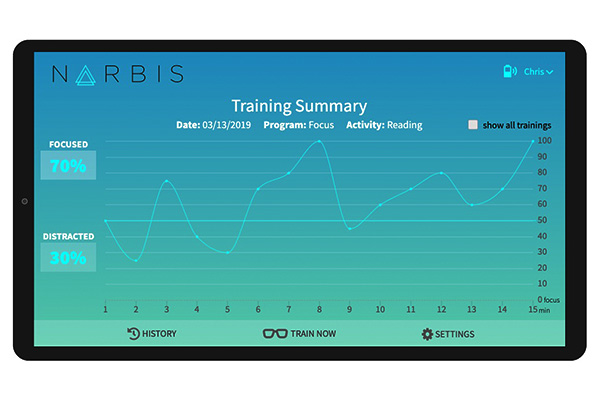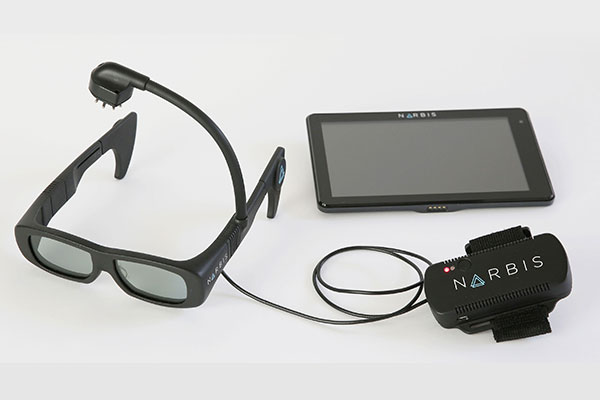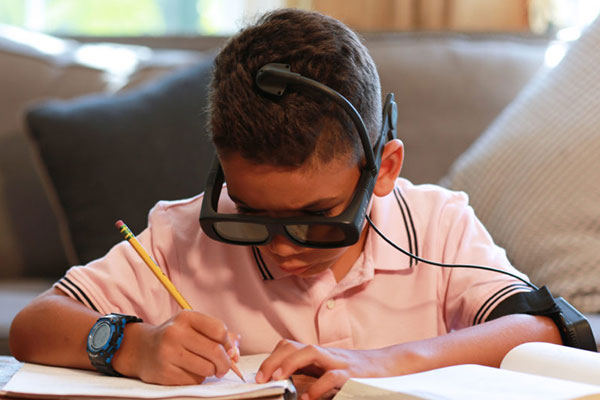Project Description
Students and adults enhance their focusing abilities using IoT devices, neurofeedback, and a mobile app
Narbis’s revolutionary wearable tech and app set to strengthen the future of learning
The power of wearable tech, IoT sensors, microservices, and an Android mobile app come together to provide a system for consumers, educators, and healthcare professionals to leverage neurofeedback technology for brain training and improved concentration.
Share this
The Challenge
After developing their innovative wearable tech device, our client needed a way to process and display that data for their users in a clear and visually attractive way.
The Result
The upgraded Android mobile application seamlessly connects via Bluetooth to provide a real-time reading of a user’s focus state using neurofeedback gathered from an IoT-sensor-equipped headset, glasses with focus indicators, and a controller armband.
Features & Highlights
Processing big data with IoT devices,
handling millions of rows of information and signal data
Sensor tracking and calibration with neurofeedback data
Offline use capability,
system can be used without WiFi by using delayed data synchronization
The Challenge
The client, Narbis, created a system by which individuals can train their brain to enhance their focusing capabilities using neurofeedback. They developed proprietary, wearable tech hardware (a headset with smart glasses and arm band) that uses neural sensors—a form of Internet of Things (IoT) technology, to capture a user’s neurological feedback. In order to translate that feedback into usable data, Narbis needed a way to transmit and display the data into functional information.
Chateaux was selected to build an enhanced, tablet-based Android application to fulfill this need.
Narbis selected Chateaux for this project based on established expertise in emerging technology, including sensor technology, application development, analytics and visualizations, and cloud services.
The Approach
In the proof of concept (POC) phase, a prototype app was built to work with a previous headset version. Following the revision of the headset, hardware parameters changed that impacted the functionality of the POC app. In addition, a new tablet was selected to be the companion device for the full product package. For the production phase, Narbis needed to connect these new devices via Bluetooth and create an upgraded web app that could process neurofeedback data and present it in an intuitive way.
UI/UX
Chateaux used Android Material Design to develop the screens used in the application. The first screens are primarily used for Set Up, where users select the duration of data capture and type of training desired. A second screen is used for Calibration, which is used to calibrate the sensors that are worn on the head using the proprietary headset.
The next screens include the Live Training screen, which shows the brainwave technology in action and assists the user with how to improve their focusing attention, and the History screen, which shows focus patterns over time. All screens were created with a bright color palette, large fonts, and animations for user delight.
Analytics
Various analytics are provided within the app, but the most powerful include the visualizations displayed during the Live Training.
While the focusing system can be used by anyone, it is predominantly designed for use by students who are simultaneously monitored by educators and healthcare professionals such as behavioral therapists. The goal of this collaborative use is to enhance the student’s concentration abilities. If a student’s mind deviates from focusing, the headset’s glasses flash and darken, visually indicating the user to return to their task. In order for the observer to track this focusing state, analytics are vital.
With this in mind, Chateaux designed the app’s dashboards so that focus and distraction can be tracked in real-time. During and after training, focusing information is displayed to show distraction rates and provide an overview of suggested focus training.
IoT Sensors and Data-Processing
Two integration points were required: an integration point with the device hardware to receive the neurological feedback, and a second integration point to track the neural sensors. To collect information gathered through the sensors, Chateaux wrote software using microservices architecture that can intuitively process data in the cloud.
Data is initially collected and processed on-premise in the device and saved to offline storage. It is then sent to the cloud through a custom API within the application. This is by design, so that the device does not require Wi-Fi in order to function. (The device stores the data locally for up to a week.) Data sent to the cloud is gathered by Narbis to analyze brainwave patterns and further enhance focusing training.
MDM (Mobile Device Management)
The web app itself operates in MDM, or mobile device management, mode using Google Mobile Management. With this capability, only the web app is allowed to run on the mobile device, making the tablet more secure. This also provides greater control of automatic and managed updates to the app. MDM also enables a customer support team to provide direct assistance to end users, if necessary.
The Result
Chateaux delivered a production-ready Android mobile app that supports features including sign-on screens, authentication system integration, data storage, and encryption compliance. Bluetooth connectivity and device discovery integration issues with the hardware were also resolved. In addition, MDM provides greater security, update control, and support to the tablet. Custom APIs enable data synchronization between offline storage to the cloud, and also allows users to perform the training offline, if necessary.
Using an EEG, or electroencephalography, sensor-equipped headset and glasses with focus indicators, Narbis’s upgraded Android mobile application seamlessly connects via Bluetooth to provide a real-time reading of a user’s focus state. Users can create a custom profile, select their desired focus program, track their training progress in real-time, and monitor their progress using training history.
The mobile app is now available on a tablet device that is part of the product package system.
About Narbis
Narbis is a family-owned business based in Pennsylvania that develops products to help people understand and enhance their concentration habits using neurofeedback.


